The 1920s was a time of significant change and excitement, and men’s fashion was no exception. When I think of the Roaring Twenties, I picture sharp suits, stylish hats, and a sense of elegance that’s hard to find today.
Understanding the clothing of this era isn’t just about knowing what people wore; it’s about appreciating the cultural shifts that shaped these styles. Every piece had its own story, from the dapper three-piece suits to the casual yet classy sportswear.
In this blog, I’ll take you through some little-known facts about 1920s men’s clothing.
We’ll uncover the details that made their fashion unique and explore why these styles have stood the test of time. Whether you’re a history buff, a fashion enthusiast, or just curious, you’re in for a treat. Let’s dive into the fascinating world of 1920s men’s fashion together!
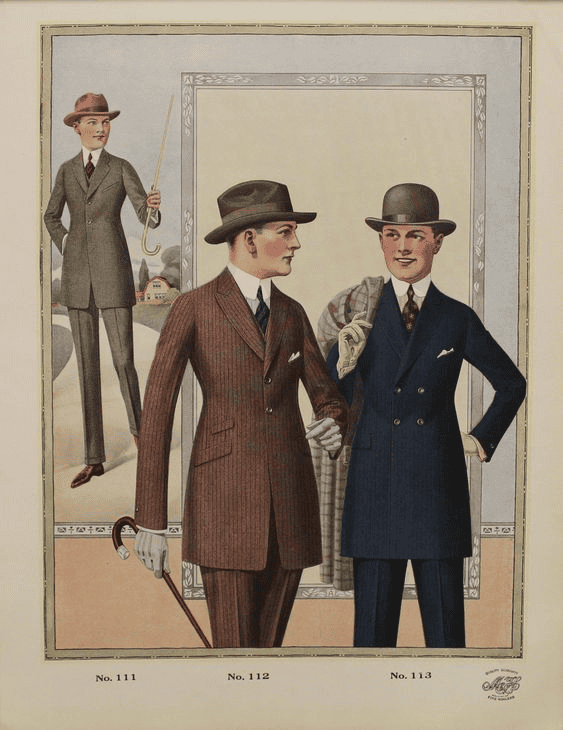
Credits: @keenansonya / Pinterest
Key Takeaways
- The 1920s marked a significant shift from traditional, formal styles to more relaxed and modern clothing, reflecting broader cultural changes after World War I.
- From tailored suits and stylish dress shirts to various types of hats, men’s fashion in the 1920s was characterized by a mix of elegance and practicality, with each social class having distinct styles.
- Literature and television, such as The Great Gatsby and Peaky Blinders, played a crucial role in shaping and popularizing 1920s men’s fashion trends.
- The trends and innovations of the 1920s continue to influence modern men’s fashion, with vintage elements like fedoras, tailored suits, and patterns still prevalent today.
Facts About 1920s Men’s Clothing
Dress Shirts
Dress shirts were a key part of men’s fashion in the 1920s, a time of big social changes and new trends. Let’s take a closer look at why dress shirts mattered, the popular styles, and what made this era so unique.
Popular Styles
In the 1920s, dress shirts weren’t just clothes; they showed sophistication and status. They reflected a man’s taste and social standing, whether for formal events or casual outings. The rise of leisure activities also made fashion more relaxed but still elegant.
1. White Dress Shirts
- Formal Occasions: White dress shirts were the go-to for formal events, often paired with black bow ties for a timeless look.
- Versatility: They could be dressed down with a suit or worn casually, making them a wardrobe staple.
2. Colored and Patterned Shirts
- Men started experimenting with light pastel colors, stripes, and checks, adding a playful touch to their outfits.
- These shirts were often paired with suits or blazers, adding personality to the look.
3. Collar Styles
- The 1920s introduced various collar styles, such as the spread collar and the casual button-down, allowing men to showcase their style.
Cultural Context
The 1920s saw huge cultural shifts with the rise of jazz, the flapper movement, and post-WWI liberation. Dress shirts became a way to express individuality and modernity.
- Influence of Cinema: Hollywood stars made stylish dress shirts popular, inspiring men’s fashion trends.
- Social Changes: With more men enjoying leisure and social activities, there was a demand for stylish, comfortable dress shirts, leading to innovations in design and fabric.
Dress shirts in the 1920s were more than a fashion choice; they represented identity and social status.
The era’s mix of tradition and modernity created diverse styles, making dress shirts a timeless piece that still influences men’s fashion today.
The dress shirt remains a key element in a stylish man’s wardrobe, whether for formal events or casual outings.
Headwear
Men’s headwear in the 1920s was diverse and reflected the social status and activities of the wearer. Here are some key facts about the different types of hats popular during this era:
Flat Caps
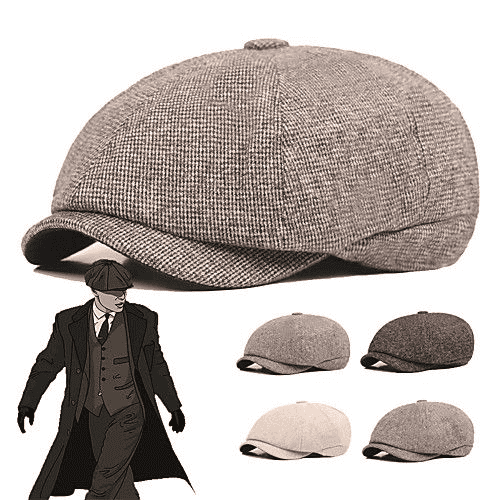
Credits: @LightInTheBox / Pinterest
Flat caps, also known as newsboy caps or ivy caps, were commonly worn by working-class men. They became iconic partly due to their association with the characters from the television series Peaky Blinders, which depicted gangsters in 1920s Birmingham.
These caps were typically made of wool or tweed and featured a rounded crown with a small, stiff brim. They were favored for both casual and sporting attire.
Bowler Hats
The bowler hat was a popular choice among businessmen and professionals. Its rounded, hard crown and narrow brim made it a distinctive accessory for formal and semi-formal occasions.
The bowler hat was often associated with the middle class and was a common sight in urban settings. It symbolized respectability and professionalism.
Top Hats
Top hats were reserved for the upper classes and special occasions, such as weddings, formal events, and high-society gatherings. They were typically made of silk or beaver fur and featured a tall, cylindrical shape.
While still worn by the elite, the top hat began to decline in everyday use during the 1920s as more casual styles gained popularity.
Straw Hats and Fedoras
Straw hats, including boater and Panama hats, were popular for casual and outdoor activities, especially in the summer. They provided a stylish yet practical option for leisure activities.
The fedora, originally a women’s style, gained prominence among men during the 1920s. This wide-brimmed felt hat became synonymous with gangsters and was often worn in both casual and formal settings.
The variety of headwear in the 1920s reflected the era’s social dynamics and fashion trends. From the practical flat cap to the elegant top hat, each style served a purpose and contributed to the overall aesthetic of men’s fashion during the Roaring Twenties.
Popular Culture Influence
The influence of popular culture on 1920s men’s clothing was significant, with various literary and television works shaping fashion trends of the era. Here are some key points regarding this influence:
“The Great Gatsby”
The Great Gatsby of F. Scott Fitzgerald epitomized the glamour and extravagance of the Jazz Age.
The novel highlights the luxurious lifestyles of its characters, including impeccably tailored suits, vibrant colors, and stylish accessories, reflecting the opulent fashion of the time.
The protagonist, Jay Gatsby, is often depicted in striking outfits, such as his famous pink suit, symbolizing the era’s fashion trends. This portrayal influenced men’s fashion by promoting bolder colors and more relaxed fits compared to previous decades.
“Peaky Blinders”
The television series Peaky Blinders brought the working-class style of the 1920s into mainstream fashion.
The show features characters wearing flat caps, tailored suits, and vests, which resonated with audiences and inspired a resurgence of interest in vintage styles associated with the working class.
The show’s popularity helped popularize the flat cap and other elements of working-class fashion, emphasizing a rugged yet stylish aesthetic that appealed to a broad audience.
“Boardwalk Empire” and “Downton Abbey”
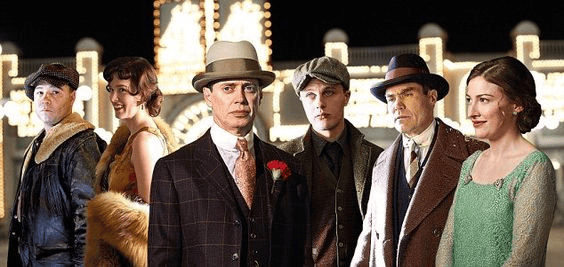
Credits: @dailymail / Pinterest
Both Boardwalk Empire and Downton Abbey showcased a wide range of 1920s fashion, from the opulence of high society to the more practical attire of everyday life.
Boardwalk Empire highlighted the lavish styles of gangsters and the elite, while Downton Abbey depicted the formal wear of the upper classes alongside more casual styles for the working class.
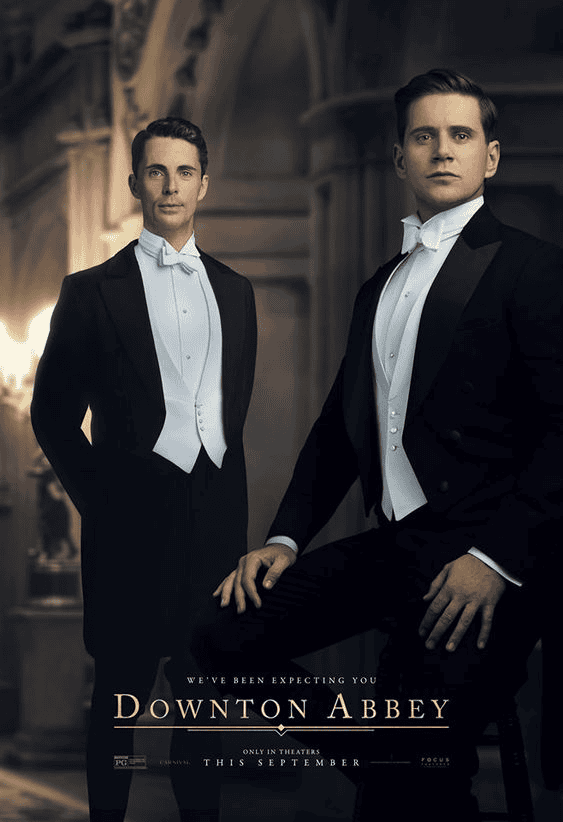
Credits: @siteburnbook / Pinterest
These shows contributed to a greater understanding of the fashion trends of the 1920s, portraying the evolution of men’s clothing, including the shift towards lighter fabrics, more colorful patterns, and the incorporation of accessories like ties and hats.
The 1920s saw a profound intersection of popular culture and fashion, with works like The Great Gatsby, Peaky Blinders, Boardwalk Empire, and Downton Abbey playing crucial roles in shaping men’s clothing trends.
These influences reflected the social dynamics of the time and contributed to the enduring legacy of 1920s fashion in contemporary style.
Suits and Jackets
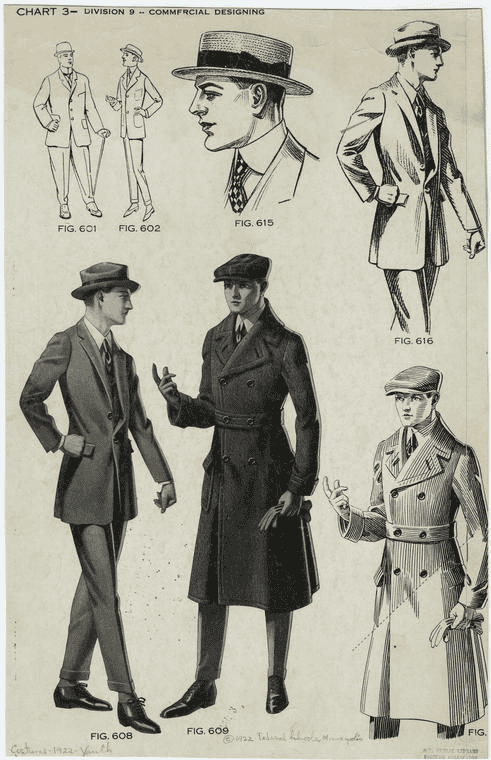
Credits: @pbarr505 / Pinterest
The 1920s was an era of sharp, classy men’s style, filled with suit jackets, pocket squares, and white shirts.
I find this period fascinating because it wasn’t just about what guys wore but about making a statement. From double-breasted jackets to pocket watches, every detail mattered.
Men sported collar pins, wide lapels, and even leather jackets for a casual look. Understanding 1920s fashion is essential because it significantly impacted the modern suits we see today.
Suit Jackets
Double-breasted suit jackets were a staple in the 1920s. They often featured 3 or 4 buttons, came in single or double-breasted styles, and featured two sets of flap pockets, a detail often missing in modern suits.
These jackets had wide lapels that grew yearly, peaking in popularity by the late 1920s. The lapels on suit jackets became wider as the decade progressed, departing from the slimmer fits of earlier years.
Fit and Silhouette
Early 1920s suits were slim and snug, but after 1924, looser, boxier fits took over. Wider lapels and looser fits defined the decade’s fashion shift, moving away from the structured suits of previous times.
Young men loved high-waisted trousers known as Oxford bags, which were wide and baggy, much more so than today’s pants.
Casual Jackets
Leather jackets became popular for casual attire, influenced by the rise of sports and leisure activities. Knickerbockers and plus-fours, knee-length pants often worn with knee socks, became trendy even for non-athletes.
Accessories
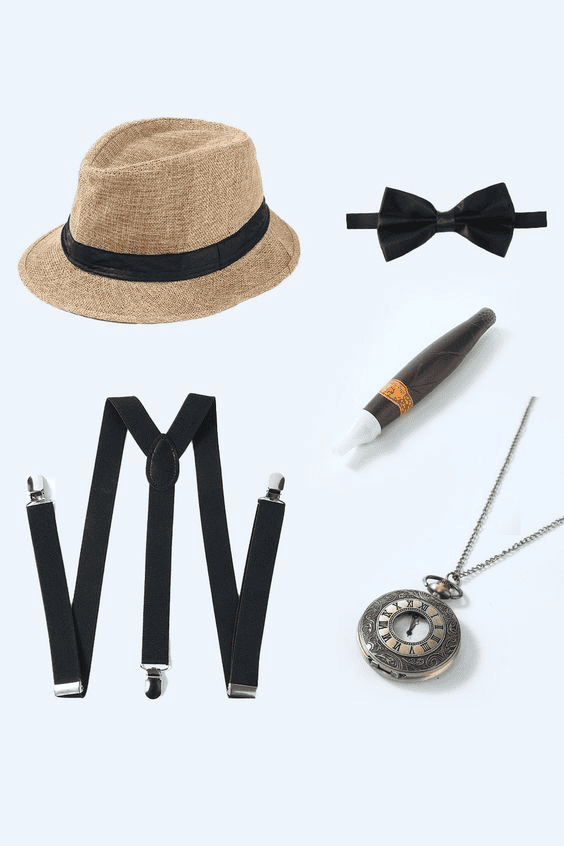
Credits: @zapakaretro / Pinterest
Picture guys wearing crisp white shirts, navy blue suits, and two-tone shoes, ready for a 1920s party. The fashion industry was booming then, and men’s clothing was all about sharp, elegant looks.
Now, let’s explore how formal attire included black bow ties, tie clips, and the ever-stylish fedora hat. Sweater vests and light browns made casual outfits stand out, while white pants added flair.
Accessories like button-down shirts, collar pins, and pocket squares were essential for the well-dressed man. Whether you’re into the current trend or just curious about the past, you’ll love discovering the style secrets of this iconic era.
Pocket Squares
Pocket squares were essential, adding style and color to suits and tuxedos. Made from silk or linen, they were often matched to ties, hat bands, or shirts. Solid colors and bold art deco designs were popular choices.
Pocket Watches
Pocket watches symbolized sophistication and status, carried on chains attached to vests or waistcoats. While wristwatches were gaining popularity, pocket watches remained the norm for formal and professional settings.
Collar Pins and Tie Clips
Collar pins and tie clips kept a man’s look polished, especially as shirt collars became softer. These small accessories allowed for a personal touch while keeping everything in place.
Hats
Hats were an essential part of the wardrobe, with top hats for formal events and fedoras or bowler hats for businessmen. Newsboy caps and straw boater hats were popular for a more casual look, often worn for leisure activities.
Other Accessories
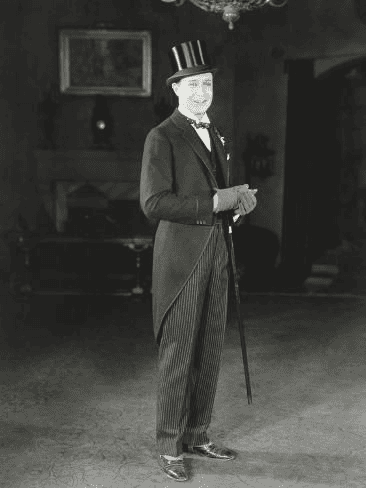
Credits: @artdotcom / Pinterest
Canes and walking sticks, sometimes with hidden features like flasks or knives, were fashion statements. Gloves were common, with white snap gloves for evening wear and colored gloves for daytime.
Suspenders, armbands (sleeve garters), and tall socks in patterns like argyle completed many men’s outfits.
In summary, accessories played a significant role in 1920s men’s fashion, allowing them to express style and status through small but impactful details.
Social Class and Fashion
As we can observe from the facts above, men’s fashion in the 1920s clearly reflected social class, with each group sporting distinct styles that marked their status and lifestyle. Here’s a look at how this era influenced men’s clothing:
Upper Class Fashion
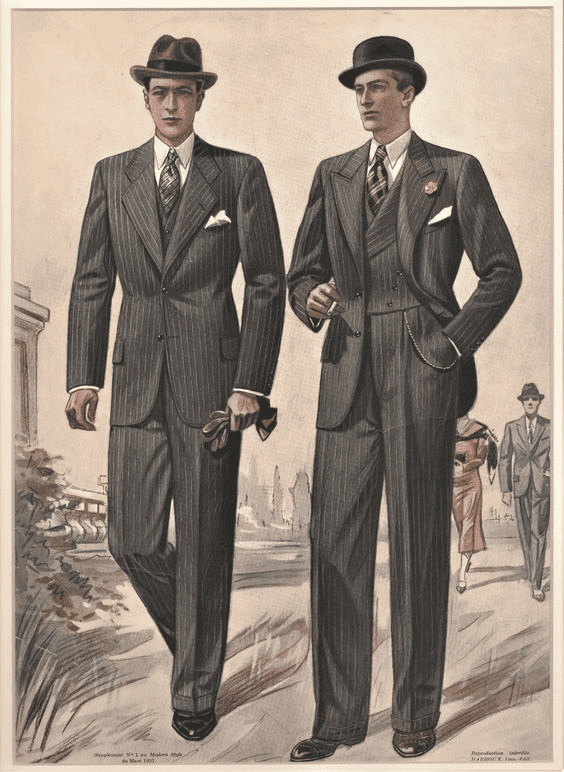
Credits: @chairishco / Pinterest
Wealthy men were known for their refined look—elegant attire. They often wore tailored 1920s men’s suits with high waists and detachable collars.
For formal events, a white shirt with an attached winged collar, a black bow tie, and dinner jackets were the norm. Black patent shoes and a wide-brimmed hat, reflecting the luxurious style of the time, completed the outfit.
And what’s more, these suits were made from high-quality fabrics like wool and silk, showcasing their wealth. Accessories like top hats and elegant shoes added to their sophisticated overall look.
Middle Class Fashion
Middle-class guys wore well-made but more affordable 1920s suits.
Casual wear for them included button-down shirts, sweater vests, and trousers. The newsboy cap was a popular choice, and they opted for a more relaxed style, moving away from the rigid formalwear of previous years.
Their attire was both fashionable and practical, including fedoras or bowler hats as alternatives to top hats.
Working-Class Fashion
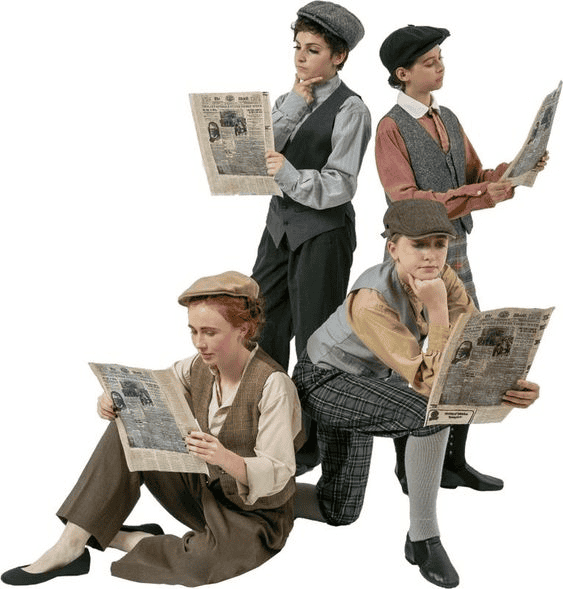
Credits: @thecostumer1917 / Pinterest
Working-class men wore practical clothing designed for hard work. This included button-down shirts, flat caps, and sturdy trousers. Their outfits were functional and made from durable fabrics like tweed.
With fewer options available, these men reserved their best suits for special occasions. Their focus was on affordability and durability rather than the latest trends.
Blue-Collar Workers
Blue-collar workers wore clothing suited for manual labor. Overalls and work shirts made from heavy fabrics were common, prioritizing comfort and longevity over style.
Overall, the 1920s showcased a significant shift in men’s fashion based on social class. While the upper class flaunted luxury and style, the working class focused on practicality and durability. This division in fashion highlighted both economic status and the changing social dynamics of the decade.
Formal and Casual Attire
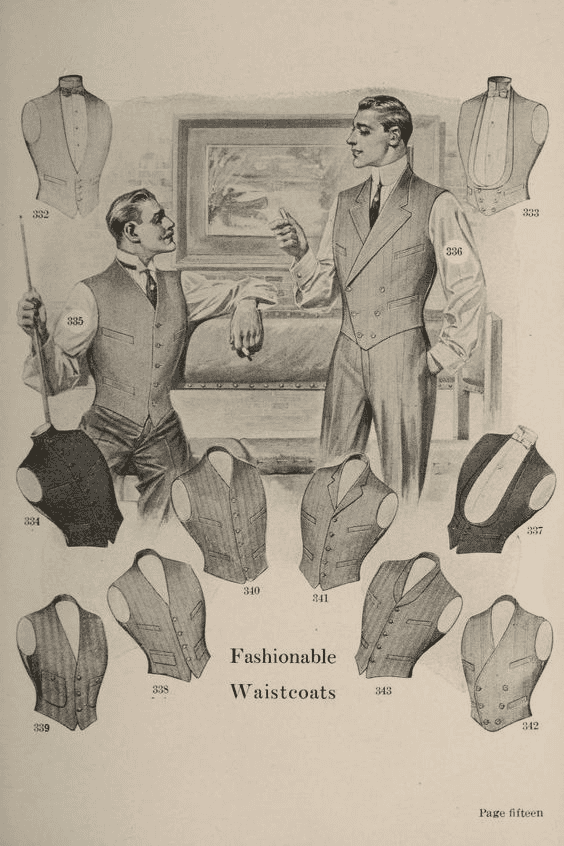
Credits: @HeindrichStrasse / Pinterest
In the 1920s, men’s fashion changed dramatically, shifting from past styles to something new.
Formal Attire
1. 1920s Men’s Suits
The three-piece suit was the go-to for formal occasions. These suits featured a jacket, trousers, and a vest, creating a sophisticated look perfect for weddings and elegant dinners.
I’ve always admired how Rudolph Valentino and F. Scott Fitzgerald made these outfits iconic, often seen in their stylish dinner jackets and high-waisted trousers.
2. Footwear
For formal events, black patent shoes were the norm, paired with wide-brimmed dress pants to add a touch of luxury.
The overall look was polished and refined, highlighting the era’s emphasis on elegance.
3. Accessories
Men accessorized with white ties or black bow ties for a sharp finish.
Pocket squares and detachable collars completed the sophisticated appearance, making formalwear truly stand out.
Casual Attire
1. Sweater Vests and Knitwear
For a more relaxed look, sweater vests and knitwear became popular. These items were comfortable and stylish, often worn with a newsboy cap or a casual golf course outfit.
2. Color Palette
Casual wear embraced lighter colors and patterns, moving away from the darker tones of previous years.
Men started wearing casual shirts with brighter or striped prints, reflecting a trend toward a more relaxed and personal style.
3. Influence of Sports and Leisure
The 1920s saw a rise in sports influences, leading to the popularity of knickerbockers and sporty blazers.
This shift towards casual wear was influenced by leisure activities, making comfortable clothing a staple for everyday life.
The 1920s were a pivotal time for men’s fashion, blending formal elegance with casual comfort.
This era’s styles not only mirrored the changing social norms but also set the stage for the modern fashion we see today.
Evolution and Impact
The 1920s were a pivotal time for men’s fashion, marking a significant shift from the old styles to more modern ones.
Shift in Silhouettes
In the early years, guys wore traditional clothing like high-waisted trousers and white shirts with attached collars. By the decade’s end, 1920s men’s suits had loosened up.
Suits featured wider lapels and relaxed cuts, mirroring a cultural move towards comfort and self-expression after World War I.
Casualization of Fashion
The 1920s saw a decline in rigid dress codes.
Casual wear became popular, with men embracing sweater vests, golf course outfits, and even newsboy caps. This move towards more relaxed attire was a big change from earlier decades’ formal dinner jackets and black patent shoes.
Innovative Fabrics and Patterns
The era also introduced lighter fabrics like tweed and wool, adding comfort and versatility. Patterns like plaids and stripes became popular, reflecting the lively spirit of the Jazz Age.
Impact on Modern Men’s Fashion
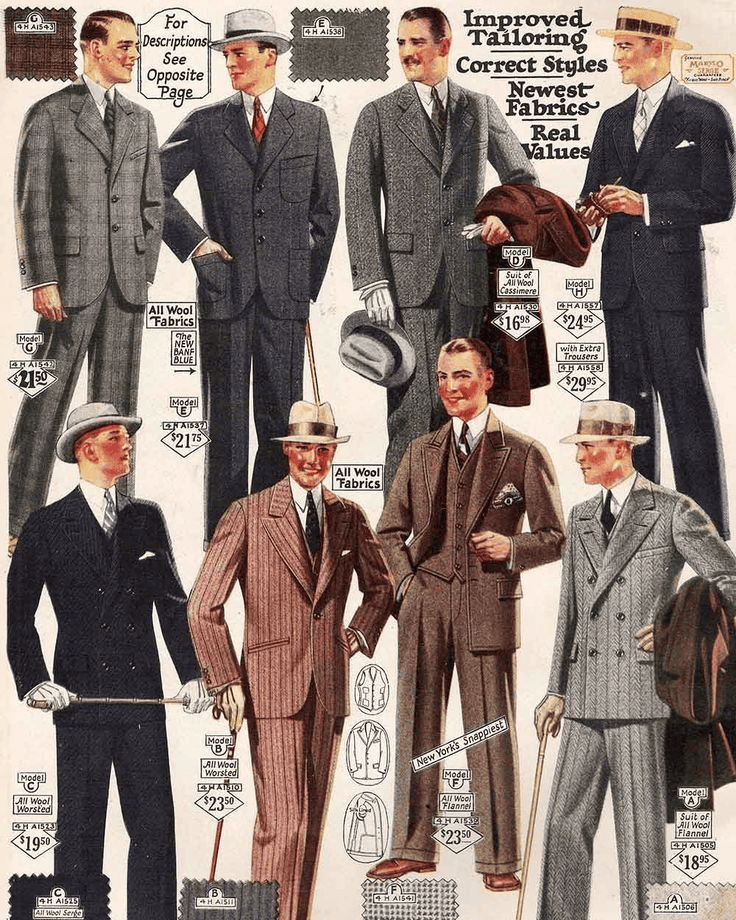
Credits: @cyndyrockymorebkaj / Pinterest
The 1920s laid the groundwork for modern suits and casual wear. Today’s tailored fits and casual styles owe much to the innovative designs of this era.
Vintage items from the 1920s, such as fedoras and tailored suits, have made a comeback. This revival shows how the elegance and individuality of 1920s fashion continue to inspire.
Most importantly, the fashion of the 1920s mirrored broader cultural shifts, including a rise in consumerism and personal expression. These trends are still visible in modern fashion, where personal style is highly valued.
In summary, the 1920s were crucial for men’s fashion, blending tradition with modern style. The trends from this decade have left a lasting impact, shaping how we dress today.
Conclusion
In conclusion, the 1920s were a transformative period for men’s fashion, marked by a dramatic shift from traditional styles to more modern and relaxed looks.
Key facts about 1920s men’s clothing include the evolution from high-waisted trousers and formal dinner jackets to looser suits with wider lapels and casual wear like sweater vests and newsboy caps.
The influence of popular culture, with figures like Rudolph Valentino and F. Scott Fitzgerald, helped popularize bold patterns and vibrant colors, reflecting the exuberance of the Jazz Age.
The lasting impact of 1920s fashion is evident in today’s clothing, where elements of this era’s style continue to inspire modern trends.
The foundation laid by the 1920s in tailoring and casual wear still shapes contemporary menswear, blending elegance with comfort.
This legacy highlights how the style of the Roaring Twenties remains relevant, celebrating individuality and innovation in fashion.
